From A to Z:
Your Comprehensive Spring Gardening Checklist
Spring is the perfect time to get your garden in shape for the coming months. Whether you are an experienced gardener or just starting out, it's important to have a checklist to make sure you cover all the necessary tasks. In this comprehensive spring gardening checklist, we'll cover everything you need to do to get your garden ready for a successful growing season. From A to Z, let's dive into the essential tasks to check off your list.
A - Assess Your Garden
The first step to getting your garden ready for spring is to assess the area. Walk around and make note of any damage from the winter months, such as broken branches, dead plants, and soil erosion. This will give you an idea of what needs to be repaired or replaced before you start your spring planting.

B - Begin Cleaning
After assessing your garden, it's time to begin cleaning up. Start by removing any debris, such as fallen leaves or dead plants. Clear out any garden beds that still have remnants of last year's growth. This will help prevent any diseases or pests from overwintering and infecting your new plants.
C - Compost
Spring is the perfect time to start composting. Use the debris you cleaned up from your garden beds to start a compost pile. A compost pile is an easy and cost-effective way to add nutrients to your soil. It's important to turn your compost pile regularly to ensure it breaks down quickly.

D - Divide Perennials
Spring is the perfect time to divide your perennials. As plants grow, they tend to become crowded, which can negatively impact their growth. By dividing them in the spring, you'll give them more room to grow and improve their overall health.
E - Edge Garden Beds
Edging your garden beds is an easy way to add a finished look to your landscaping. Use a garden spade to create a defined border around your garden beds. This will help prevent grass from growing into your garden and give it a more polished appearance.

F - Fertilize
Fertilizing your garden is essential for healthy plant growth. In the spring, it's important to apply a slow-release fertilizer to your garden beds. This will provide your plants with the necessary nutrients throughout the growing season.
G - Get Your Tools in Order
Before you start working in your garden, it's important to make sure your tools are in good working condition. Clean and sharpen your garden tools, such as shovels, pruners, and shears. This will make your work in the garden easier and more efficient.

H - Harden Off Seedlings
If you started seedlings indoors, it's important to harden them off before planting them outside. This means gradually exposing them to the outside temperature and sunlight, so they don't experience transplant shock.
I - Irrigation
Make sure your irrigation system is in good working order before planting your garden. Check for any leaks or broken sprinkler heads. This will ensure your plants receive the necessary amount of water throughout the growing season.

J - Join a Gardening Club
Joining a gardening club is a great way to learn new techniques and get advice from experienced gardeners. It's also a great way to share your gardening successes and challenges with other like-minded individuals.
K - Keep Weeds Under Control
Weeds can quickly take over a garden, so it's important to keep them under control. Use a hoe or hand weeder to remove weeds from your garden beds. It's important to get rid of them before they go to seed, as this will prevent them from coming back in the future.

L - Lay Mulch
Laying mulch in your garden beds has several benefits. It helps to retain moisture in the soil, suppress weeds, and regulate soil temperature. Apply a layer of mulch around your plants, being careful not to cover the stems or trunks. Use a natural mulch, such as bark chips or shredded leaves, to add nutrients to the soil as it breaks down.
M - Monitor for Pests
Pests can quickly damage your garden, so it's important to monitor them regularly. Look for signs of insect damage, such as holes in leaves or wilting plants. If you notice any issues, it's important to act quickly to prevent further damage.
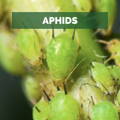

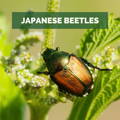

N - Nourish Soil
The health of your plants depends on the health of your soil. In the spring, it's important to add nutrients to your soil. This can be done through composting, fertilizing, and adding organic matter, such as compost or manure.
O - Organize Your Garden Shed
A well-organized garden shed will make your work in the garden more efficient. Take some time to organize your gardening tools, seeds, and supplies. This will make it easier to find what you need when you need it.
P - Prune Trees and Shrubs
Pruning is an important task to keep your trees and shrubs healthy. In the spring, it's important to remove any dead, damaged, or diseased branches. This will promote new growth and help prevent the spread of disease.
55 Heirloom Vegetable Seeds Variety Pack
Q - Quality Seeds
The quality and type of the seeds you choose is important for a successful garden.
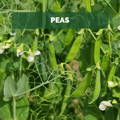

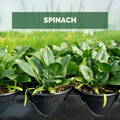


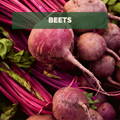
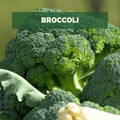
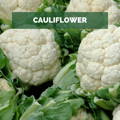
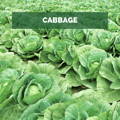

R - Rotate Crops
Rotating your crops is important for preventing disease and improving soil health. If you plant the same crops in the same spot year after year, it can deplete the soil of nutrients and increase the risk of disease. By rotating your crops, you'll improve soil health and prevent disease.
S - Seed Starting
Starting seeds indoors is a great way to get a jumpstart on the growing season. Start your seeds in a warm, well-lit area, and keep them moist. When it's time to transplant them outside, harden them off first to prevent transplant shock.
T - Transplanting
Transplanting is an important task for moving seedlings from indoors to outdoors. It's important to choose the right time to transplant to prevent transplant shock. Choose a cloudy day to prevent the plants from drying out in the sun.

U - Upcycle
Upcycling is a great way to repurpose items in your garden. Use old pallets to create a raised garden bed or turn an old wheelbarrow into a planter. Upcycling is a great way to add personality to your garden and save money.
V - Vegetable Gardening
Vegetable gardening is a great way to grow your own food and save money. Choose the right location for your garden, and make sure it receives enough sunlight. Choose plants that grow well in your area, and make sure to fertilize and water them regularly.

W - Weed Prevention
Preventing weeds is an important task for a successful garden. Use a weed barrier or mulch to prevent weeds from growing. Pull weeds as soon as you see them to prevent them from going to seed.
X - Xtra Care for Your Plants
Giving your plants extra care is important for a healthy garden. Make sure they receive enough water and nutrients, and monitor for any signs of disease or pests. By giving your plants extra care, you'll ensure a successful growing season.

Y - Year-Round Gardening
Year-round gardening is possible with the right planning. Choose plants that grow well in your area during each season. Start seedlings indoors, and use row covers or cold frames to extend the growing season.
Z - Zero Waste Gardening
Zero waste gardening is a great way to reduce waste in your garden. Compost your garden waste, such as leaves, grass clippings, and vegetable scraps. Use recycled materials for garden projects, such as upcycling old containers into planters. By reducing waste in your garden, you'll also be helping the environment.

In conclusion, a comprehensive spring gardening checklist is essential for a successful and thriving garden. By following these steps, you'll be well on your way to a healthy and bountiful harvest. Remember to start early, plan ahead, and give your garden the attention it deserves. With a little hard work and dedication, you'll be able to enjoy the fruits of your labor for many seasons to come. Happy gardening!